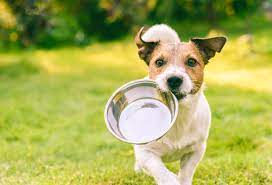
Every pet parent’s style of care varies based on each individual pet, their needs and their environment. As unique as each pet is, every pet needs to eat. But how do you tell which bowl is right for your pet? We’re here to help you decide what bowl best works for you.
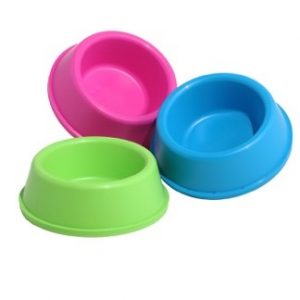
Basic Pet Food Bowls
As you know, basic food dishes come in a variety of shapes, sizes and materials. Did you know, the different bowls have different purposes? Plastic bowls are the least expensive and most durable for the clumsiest pet parents. Glass and ceramic bowls are easy to clean, a bit pricier and typically dishwasher safe. Steel bowls are mostly inexpensive, very durable, and practical. If money isn’t a driving factor, it is important to note that plastic bowls can harbor more bacteria than the rest. And while ceramic and glass are easy to clean, they can develop bacteria in the smallest of cracks, so keeping an eye on these types of bowls is important. Steel is the cleanest option; however, they pose risk of injury to pets that like to chew on their bowls.
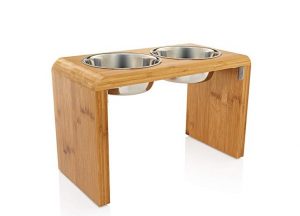
Elevated Bowls
Elevated bowls are believed to prevent gastrointestinal issues and ensure the food travels down the esophagus with ease. Although these are more expensive than basic bowls, it is a great choice for deep-chested large breeds susceptible to bloat like Great Danes, German Shepherds and Boxers. It also makes standing while eating easier for some pets, providing less strain on their neck and back. The only downside is destructive pets may cause more messes with these bowls.
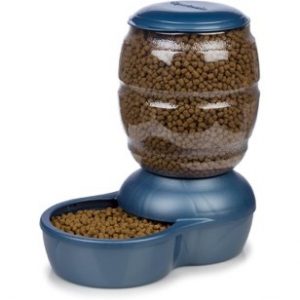
Gravity Feeders
Gravity feeders are great at storing extra food and ensuring pets never go without access to food. They can be rather inexpensive; however, using this type of bowl encourages free feeding, one of the leading causes of weight gain in pets. Constant access to replenishing food makes it difficult to track your pet’s eating patterns, which could be an important early sign of distress or illness. It also does nothing to encourage the bond between you and your pet since they do not need to depend on you to provide them with their next meal.
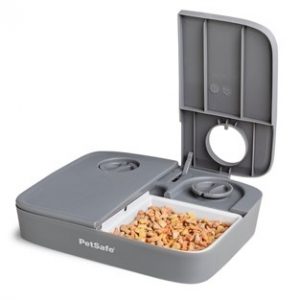
Automatic Feeders
Automatic feeders are programmed to release or dispense food at appropriate times based on the pet’s eating schedule. They are great for pets that need several small meals throughout the day or for pet parents with busy schedules. There are a variety of models with different compartments and number of times they can dispense food each day. Some even have space for ice packs to keep food fresh longer. Others can be activated by an app on your phone. Each feature drives the price further upward and they can be quite expensive based on the capabilities. Automatic feeders ensure free feeding is not an issue and make tracking your pet’s input easier. However, they must be monitored regularly to ensure feeding occurs on time and they have proper power connected to them.
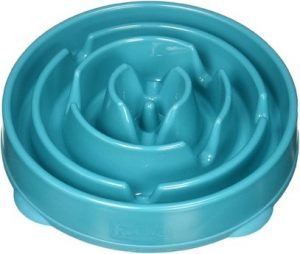
Slow Feeder Bowls
Pets who eat quickly can suffer from gastrointestinal issues or even worse, can get bloat. Bloat occurs when the stomach fills with air and fluid, causing it to twist, stopping blood flow to vital organs. Bloat is fatal without immediate surgical intervention from veterinarians. One of the best ways to prevent pets from developing bloat is by slowing down feedings. Slow feeder bowls create smaller compartments, spreading out the food which makes it take longer for pets to consume.
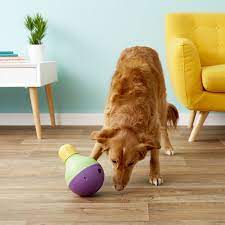
Interactive Feeders
We recommend the use of interactive puzzle feeders whenever possible. We believe that every time you use a bowl to feed, is a missed opportunity for training or mental stimulation. Not only do these feeders cut the amount of food your pet can inhale at once, they force your pet to use their brain to get rewarded with their food. Using this type of feeding method provides fun, excitement and mental stimulation which is great for reducing stress and anxiety while keeping active pets from being destructive and strengthening your bond. There are so many different types of puzzles and interactive feeders, all with different difficulty levels. Start with easy ones that just need to be rolled to dispense food and slowly move up to tricky puzzles with exposure and practice. Continue to vary what feeder you use to challenge your pet and keep them interested. The possibilities are endless!
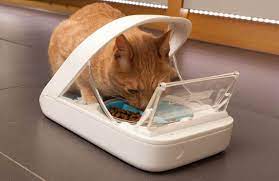
Microchip Feeders
Many multi-pet households have the issue of keeping certain pets from eating too much or each other’s food. Microchip feeders provide a great solution to ensure every pet in the home gets the appropriate serving size, the correct food and are fed at the appropriate time. They respond to your pet’s microchip or a special collar and only open access to the food compartment when the correct signal is received. This way only the pet programmed for that specific bowl can open it and eat from it, keeping food intake separated in multi-pet households. However, they are the most expensive option and they can sometimes be difficult to use if the activation collar goes missing or if the pet’s body style is too long/big causing the sensor to be unable to read the chip.
There are so many factors to consider when choosing the right bowl style for your pet. We hope this helps you decide which is best for you. Tell us more about your pet’s eating habits and their favorite feeder in the comments below.


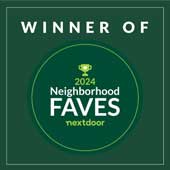

Leave a Reply